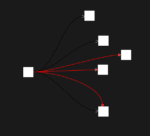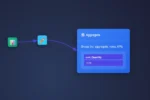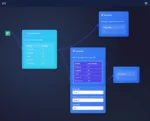In the fast-evolving landscape of data-driven decision-making, tracking time-based metrics reliably is both an art and a science. As seasoned consultants at Dev3lop, we recognize how organizations today—across industries—need to extract actionable insights from streaming or frequently updated datasets. Enter sliding and tumbling window metric computation: two time-series techniques that, when mastered, can catalyze both real-time analytics and predictive modeling. But what makes these methods more than just data engineering buzzwords? In this guided exploration, we’ll decode their value, show why you need them, and help you distinguish best-fit scenarios—empowering leaders to steer data strategies with confidence. For organizations designing state-of-the-art analytics pipelines or experimenting with AI consultant-guided metric intelligence, understanding these windowing techniques is a must.
The Rationale Behind Time Window Metrics
Storing all state and recalculating every metric—a natural reflex in data analysis—is untenable at scale. Instead, “windowing” breaks continuous streams into manageable, insightful segments. Why choose sliding or tumbling windows over simple aggregates? The answer lies in modern data engineering challenges—continuous influxes of data, business needs for near-instant feedback, and pressures to reduce infrastructure costs. Tumbling windows create fixed, non-overlapping intervals (think: hourly sales totals); sliding windows compute metrics over intervals that move forward in time as new data arrives, yielding smooth, up-to-date trends.
Applying these methods allows for everything from real-time fraud detection (webhooks and alerts) to nuanced user engagement analyses. Sliding windows are ideal for teams seeking to spot abrupt behavioral changes, while tumbling windows suit scheduled reporting needs. Used judiciously, they become the backbone of streaming analytics architectures—a must for decision-makers seeking both agility and accuracy in their metric computation pipelines.
Architectural Approaches: Sliding vs Tumbling Windows
What truly distinguishes sliding from tumbling windows is their handling of time intervals and data overlap. Tumbling windows are like batches: they partition time into consecutive, fixed-duration blocks (e.g., “every 10 minutes”). Events land in one, and only one, window—making aggregates like counts and sums straightforward. Sliding windows, meanwhile, move forward in smaller increments and always “overlap”—each data point may count in multiple windows. This approach delivers granular, real-time trend analysis at the cost of additional computation and storage.
Selecting between these models depends on operational priorities. Tumbling windows may serve scheduled reporting or static dashboards, while sliding windows empower live anomaly detection. At Dev3lop, we frequently architect systems where both coexist, using AI agents or automation to route data into the proper computational streams. For effective windowing, understanding your end-user’s needs and visualization expectations is essential. Such design thinking ensures data is both actionable and digestible—whether it’s an operations manager watching for outages or a data scientist building a predictive model.
Real-World Implementation: Opportunities and Pitfalls
Implementing sliding and tumbling windows in modern architectures (Spark, Flink, classic SQL, or cloud-native services) isn’t without its pitfalls: improper window sizing can obscure valuable signals or flood teams with irrelevant noise. Handling time zones, out-of-order events, and misshaped data streams are real-world headaches, as complex as any unicode or multi-language processing task. Strategic window selection, combined with rigorous testing, delivers trustworthy outputs for business intelligence.
Instant feedback loops (think: transaction monitoring, notification systems, or fraud triggers) require tight integration between streaming computation and pipeline status—often relying on real-time alerts and notification systems to flag anomalies. Meanwhile, when updating historic records or maintaining slowly changing dimensions, careful orchestration of table updates and modification logic is needed to ensure data consistency. Sliding and tumbling windows act as the “pulse,” providing up-to-the-moment context for every digital decision made.
Making the Most of Windowing: Data Strategy and Innovation
Beyond foundational metric computation, windowing unlocks powerful data innovations. Sliding windows, in tandem with transductive transfer learning models, can help operationalize machine learning workflows where label scarcity is a concern.
Ultimately, success hinges on aligning your architecture with your business outcomes. Window size calibration, integration with alerting infrastructure, and the selection of stream vs batch processing all affect downstream insight velocity and accuracy. At Dev3lop, our teams are privileged to partner with organizations seeking to future-proof their data strategy—whether it’s building robust streaming ETL or enabling AI-driven agents to operate on real-time signals. To explore how advanced windowing fits within your AI and analytics roadmap, see our AI agent consulting services or reach out for a strategic architectural review.
Thank you for your support, follow DEV3LOPCOM, LLC on LinkedIn and YouTube.

























